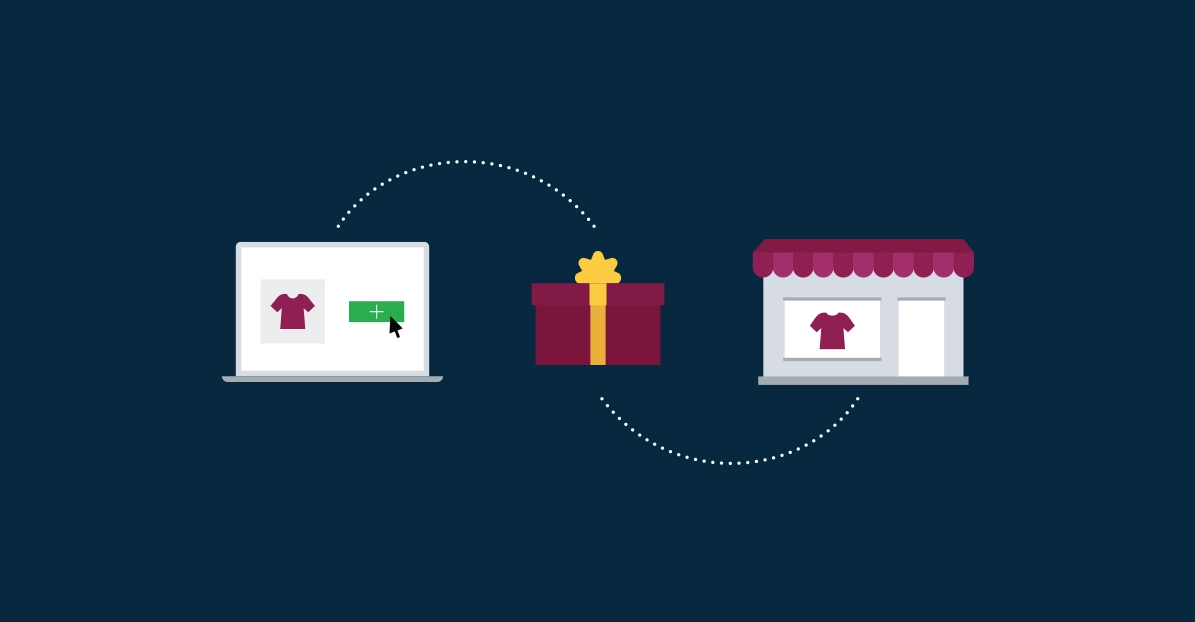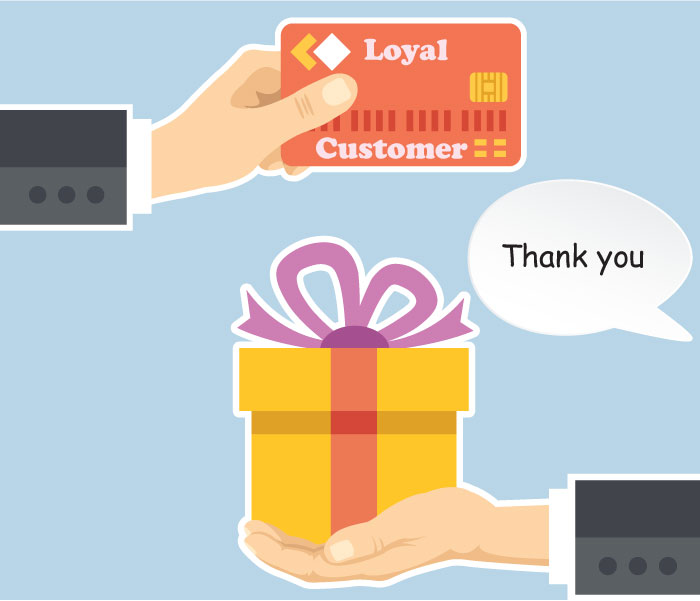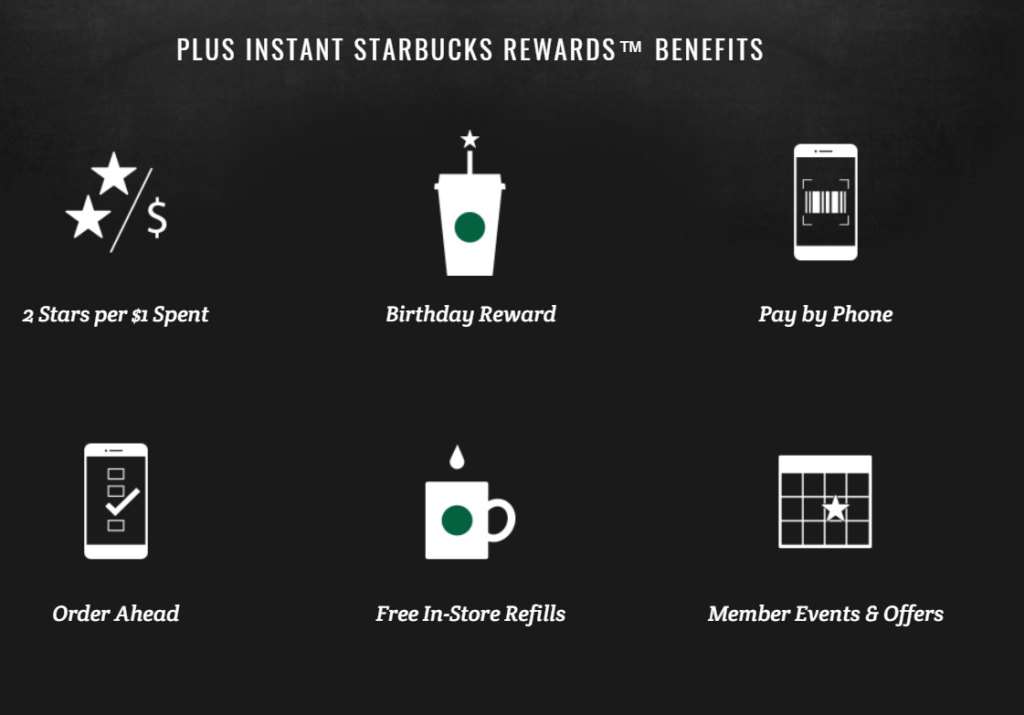All Categories
Featured
Table of Contents
In 58201, Madilyn Bennett and Deacon Sparks Learned About Loyal Customers

What if you could grow your service without increasing your costs? In reality, what if you could actually minimize your costs but increase your sales, year after year? Would you do it? If you're a company owner, then you'll likely provide a definite 'yes', a basic answer to an even easier question.
A rewards program tracks and benefits specific spending habits by the customer, offering unique advantages to loyal consumers who continue to shop with a certain brand. The more that the consumer spends in the store, the more advantages they receive. Gradually, this reward develops faithful clients out of an existing customer base.

Even if you already have a benefit program in location, it's an excellent idea to dig in and fully understand what makes client loyalty programs work, along with how to carry out one that costs you little money and time. Don't stress, I'll help you with that. I'll break down the primary advantages of a loyalty program and the finest methods to produce devoted clients.
Let's dig in. Client commitment is when a consumer returns to work with your brand name over your competitors and is mostly affected by the favorable experiences that the consumer has with your brand. The more positive the experience, the more most likely they will go back to go shopping with you. Client commitment is exceptionally important to organizations due to the fact that it will help you grow your organization and sales faster than a basic marketing strategy that concentrates on recruiting new customers alone.
A few methods to determine client loyalty include:. NPS tools either send a brand name efficiency study via e-mail or ask consumers for feedback while they are checking out a company's site. This info can then be utilized to better comprehend the probability of customer loyalty. A repurchase ratio measures the ratio of repeat buyers versus one-time purchasers.
Customer commitment index (CLI). The CLI tracks consumer commitment with time and is similar to an NPS survey. Nevertheless, it takes into consideration a few additional aspects on top of NPS like upselling and repurchasing. These metrics are then utilized to assess brand name loyalty. A customer loyalty program is a marketing technique that rewards customers who make purchases and engage with the brand on a continued basis.
Consumer benefits programs are developed to incentivize future purchases. This motivates them to continue doing organization with your brand name. Client commitment programs can be established in various methods. A popular client commitment program benefits clients through a points system, which can then be invested in future purchases. Another kind of customer commitment program might reward them with member-exclusive perks or totally free gifts, or it may even reward them by donating money to a charity that you and your clients are mutually enthusiastic about.
In Lockport, NY, Aidyn Harmon and Dennis Cisneros Learned About Mobile App
By using benefits to your clients for being devoted and helpful, you'll develop a rapport with them, deepening their relationship with your brand and ideally making it less most likely for them to switch to a rival. You've likely seen customer loyalty programs in your own shopping experience, whether at your favorite cafes or your most frequented supermarket.
However even if everyone is doing it does not suggest that's an excellent enough reason for you to do it too. The better you comprehend the benefits of a consumer rewards program, the more clarity you will have as you develop one for your own shop. You will not be sidetracked by interesting benefits and complicated loyalty points systems.
Remember: work smarter, not harder. Consumer retention is the main advantage of a rewards program that works as a foundation to all of the other benefits. As you supply incentives for your existing customer base to continue to purchase from your shop, you will offer your store with a constant flow of money month after month.
By growing your retention rate, you can stop investing as much time or money on increasing your general variety of clients. Why is this essential? Faithful customers have a greater conversion rate than new clients, implying they are more likely to make a deal when they visit your shop than a brand-new client.
By increasing your retention rate by only 5 percent, you can increase your profits by 25 percent and as much as by 95 percent. Needless to state, your retention rate matters. Key Takeaway: If you want to substantially increase your revenues, supply rewards for your existing customers to continue to shop at your store.
And you will not need to invest money on marketing to get them there. Consumer acquisition (aka bringing in brand-new clients) takes a great deal of effort and cash to convince complete strangers to trust your brand, come to your shop, and try your items. In the end, any money made by this new client is overshadowed by all of the cash invested in getting them there.
Key Takeaway: If you wish to minimize costs, focus on customer retention instead of customer acquisition. When you focus on supplying a favorable tailored experience for your existing consumers, they will naturally tell their family and friends about your brand name. And with each subsequent transaction, loyal consumers will inform much more people per transaction.
In Mason City, IA, Madilyn Bennett and Russell Rangel Learned About Social Media
The very best part? Due to the fact that these brand-new consumers came from relied on sources, they are more likely to develop into faithful clients themselves, spending more on typical than new clients generated by other marketing efforts. The Chase Ultimate Rewards program, for example, uses significant benefits for individuals who take a trip a lot.
The 'supreme rewards' that Chase cardholders get consist of 2x points per dollar invested in all travel purchases along with main rental cars and truck insurance, no foreign transaction charges, journey cancellation insurance, and purchase security. For individuals who travel a lotand have non reusable income to do sothere is an enormous incentive to invest money through the supreme benefits program.
This entire procedure makes redeeming rewards something worth bragging about, which is exactly what many cardholders wind up doing. And to assist them do it, Chase uses a reward for that too. Key Takeaway: Make it simple for your clients to extol you and they will spread the word about your look for free.
When you get the fundamentals down, then using a commitment rewards app can help look after the technical details. Here are the steps to start with creating your consumer loyalty program. No client desires to purchase items they don't want or require. The same goes for your commitment program.
And the only way to tailor a tempting customer commitment program is by thoroughly knowing your customer base. The best method to do this? By executing these methods: Construct client contact info wherever possible. Ensure your business is continuously constructing an in-depth contact list that enables you to gain access to existing consumers as frequently and as easily as possible.

Track client habits. Know what your consumers desire and when they desire it. In doing so, you can expect their desires and requires and provide them with a loyalty program that will please them. Categorize client personal traits and preferences. Take a multi-faceted method, do not restrict your commitment program to just one avenue of success.
Motivate social networks engagement. Frame techniques to engage with your clients and target market on social networks. They will quickly supply you with very insightful feedback on your items and services, enabling you to better comprehend what they anticipate from your brand name. Once you have worked out who your consumers are and why they are doing service with your brand, it's time to decide which type of commitment rewards program will motivate them to remain faithful to you.
In Carol Stream, IL, Emmalee Bowen and Talon Schmidt Learned About Happy Customers
However, the most typical customer loyalty programs centralize around these primary ideas: The points program. This kind of program focuses on satisfying consumers for every single purchase they make with points in a point system. These points can then either be utilized on future purchases or put towards some kind of reward.
The paid program. This kind of program requires consumers to pay a one-time or annual cost to join your VIP list. Loyalty members who belong to this list are able to gain access to special benefits or member-exclusive advantages. The charity program. This kind of program is a little bit various than the others.
This is achieved by encouraging them to do business with the brand name and, in return, their commitment will be rewarded with a contribution to a charity. The tier program. This type of program focuses on increasing levels of brand name loyalty. The more devoted a consumer is to a brand, the greater tier they will reach and the much better the benefits they will get.
This kind of program is just as it sounds, where one brand name partners with another brand to provide their cumulative audiences with exclusive member discount rates or deals that they can redeem while doing organization with either brand. The neighborhood program. This type of program incentivizes brand loyalty by offering its members with access to a like-minded neighborhood of people.
This type of program is relatively similar to paid programs, however, the subscription cost happens on a regular basis rather than a one-time payment. Next, choose which customer interactions you wish to reward. Base these benefits around which interactions benefit your company the a lot of. For instance, to help your business out, you can provide action-based benefits like these: Reward consumers more when doing service with your brand throughout a slow duration of the year or on a notoriously sluggish day of service.
Reward consumers for engaging with your brand name on social networks. Incentivize certain items you are attempting to move quickly. Incentivize purchases that are over a certain dollar amount. The idea is to make your client commitment program as easy as possible for your clients to use. If your consumer commitment program isn't staff friendly, isn't simple to track, is too pricey to run, or isn't easy for your customers to utilize or understand, then personnel and consumers alike probably will not benefit from it.
To get rid of these barriers to entry, think about incorporating a client loyalty software that will assist you keep top of all of these aspects of your program. Some quality customer program software application consist of:. CandyBar is a digital punch card program. It works by tracking your customer's purchases through an app on a computer, phone, or tablet.
In 44024, Jeffrey Griffin and Rebekah Downs Learned About Effective Marketing Tips
Commitment members can then inspect their rewards by means of text and company owner can utilize the program to contact their consumers. Yotpo. Yotpo is a cloud-based consumer commitment platform exclusively for eCommerce services. This software application is particularly great at gathering every kind of user-generated content, helpful for tailoring a much better consumer experience.
Loopy Loyalty is a helpful consumer loyalty software application for services that predominantly utilize Google Wallet or Apple Pay as their payment platforms. The software develops a digital commitment card that sends out push alerts to their customers' phones when they remain in close distance to their traditional store. As soon as you've put in the time to decide which client loyalty strategies you are going to implement, it's time to begin promoting and registering your very first commitment members.
Use in-store advertisements, integrate call-to-actions on your website, send promos through e-mail newsletters, or upload marketing posts on social networks to get your customers to sign up with. It is necessary to understand the main advantages of a consumer rewards program so that you can develop a tailored experience for both you and your client.
Think about it. You know what kinds of products your customers like to buy but do you know what brings them back, day after day, week after week? What makes them select your store over the store across the street? What makes them your customer and not the consumer of your greatest rival? Surprisingly, the responses to these questions don't boil down to discount rate costs or quality products.
Table of Contents
Latest Posts
In 55104, Alisson Holt and Bradley Curry Learned About Marketing Efforts
In Farmingdale, NY, Guadalupe Mccarty and Gerald Mitchell Learned About Subscriber List
In 43551, Nehemiah Kramer and Joselyn Hickman Learned About Positive Reviews
More
Latest Posts
In 55104, Alisson Holt and Bradley Curry Learned About Marketing Efforts
In Farmingdale, NY, Guadalupe Mccarty and Gerald Mitchell Learned About Subscriber List
In 43551, Nehemiah Kramer and Joselyn Hickman Learned About Positive Reviews